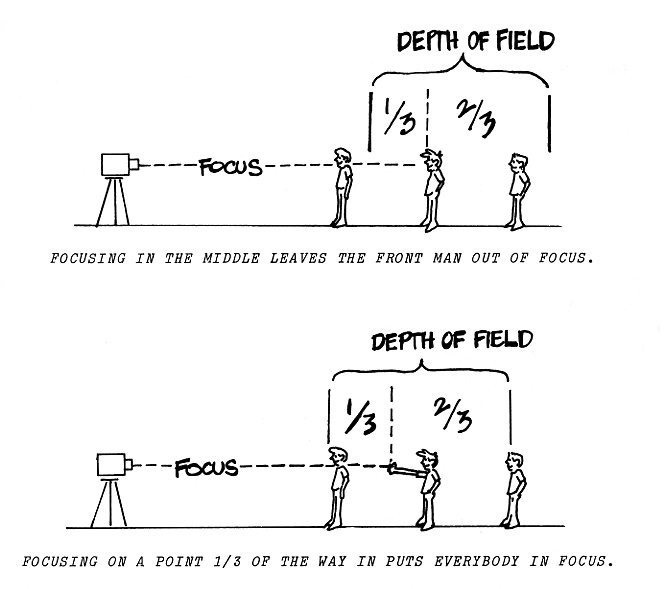Now that you have the basics of focusing a camera lens…
You understand what depth of field is and the three basic controls to focusing a camera lens. If you missed out on that article click here to review that information. It is a game changer for beginners who are learning basic camera operation.
There is more to focusing a camera then setting the distance and keeping your subject in the field of view.
Let’s starting moving the camera.
The instinct of moving the camera is very difficult to avoid. All of the media you consume uses some variation of camera movement. So, it is tempting to make attempts at these moves in your project.
But, you’re still at a disadvantage when you use film because most analog camera systems do not have a “video viewfinder” (video assist) like their digital counterparts.
So, how do you go about keeping laser sharp focus and producing crystal clear images with complex camera moves?
It takes practice focusing a camera lens, it is all timed choreography.
A little planning goes a long way to focus your camera. What I call “looking” is the act of scouting the scene to figure out what could happen with your subject if it were to move, in any direction.
You must base this scene scout on the information you already have. Information like;
- focal length
- starting depth of field
- subject type

You should always make it a habit to look or quickly survey the scene before you shoot, and never be afraid to give basic stage directions. Saying or signaling, “Too close or back-up.” Can save your shots, especially if the scene is mute-of-sound (m.o.s.).
If you don’t have the ability to give direction (like in candid photography or street photography), do not use the z-axis! Look out for points-of-interest moving nearer or further from your camera position. If you are moving the camera, pay attention to how close you come towards the subject, and how far you move away from it. DOMINATE THE Z-AXIS (depth).
The Z-axis is the cause of soft focused shots!
The plane of focus is 3-dimensional. But as a camera person you are only measuring your camera’s focus on one dimension. That’s the z axis or the depth (near and far). Knowing this allows you to do various things with the camera without having to worry about focus at all.
Only certain situations will knock your shots out of focus. As a rule of thumb; any scene that requires, or has, movement on the z-axis shall require special attention to the planar focus. You know who controls what’s in the shot? You do!
Right now, if you have read both of our articles on focus, you know that their are now 2 ways in which you can set it (the focus distance) and forget it.
- To utilize the hyperfocal distance.
- control the z-axis of you shot. (better known as focusing with your feet)
Simply by maneuvering your camera, subject or both in positions parallel to your focus channel (the funnel in which the depth-of-field determines) keep your image tack sharp. Ideally you should be restricting large moves on the z-axis. The depth-of-field determines how deep your action can go before you have to parallel the z-axis.
Being mindful of movement on the z-axis can really help you keep your images clear. But if you really want to dominate your image making skill, you must learn how to control the depth of field on the fly. So stay tuned for that article. In the meantime, practice what you already know. With this information, you should not have an excess of soft shots.
Get a camera lens and go try it out.

